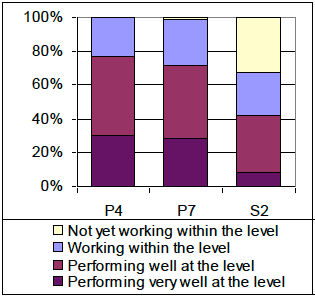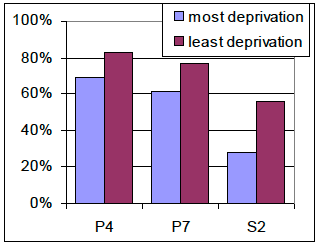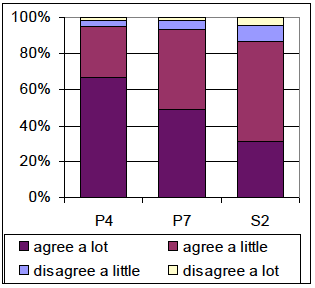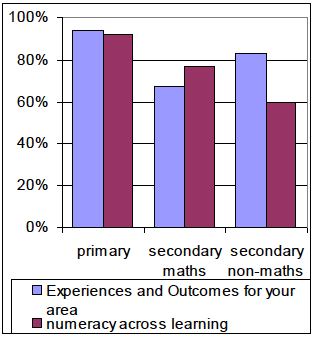Scottish Survey of Literacy and Numeracy 2011
The results of the 2011 Scottish Survey of Literacy and Numeracy (SSLN) which focused on numeracy.
Scottish Survey of Literacy and Numeracy 2011 (Numeracy) Highlights from Scotland's Results
We would like to thank the 11,000 pupils and their teachers in the 2,250 schools who took part in SSLN 2011
Full results are available from www.scotland.gov.uk/ssln
| About 76 per cent of P4 pupils were performing well or very well in numeracy at first level1, at P7 about 72 per cent of pupils were performing well or very well at second level and at S2 about 42 per cent of pupils were performing well or very well at third level. | Summary of performance  |
| The percentage of pupils not yet working within their respective levels in numeracy was less than one per cent in P4, about two per cent in P7 and about 32 per cent in S2. | |
| Boys tended to outperform girls in numeracy at P4 and P7, with the difference negligible in S2. | Proportion performing well or very well. |
| Deprivation appeared to affect performance most in S2. S2 pupils living in areas with lower levels of deprivation were twice as likely to be performing well or very well as pupils living in areas with higher levels of deprivation. |
| Pupils were generally more successful with tasks assessing data & analysis and time. Tasks assessing measurement and fractions, decimal fractions & percentages were found to be more challenging for learners. | Pupils: proportion who agree with the statement "I enjoy learning" |
| The vast majority of pupils said they enjoyed learning, though the strength of agreement reduced among older pupils. Over 90 per cent of pupils agreed that what they were learning would be useful to them outside school. Pupils were less likely to receive feedback on performance and improvement in S2 than in P4 and P7. | |
| Teachers reported high levels of confidence in delivering the Curriculum for Excellence (CfE) numeracy experiences and outcomes, with generally over 95 per cent of primary and secondary maths teachers very or fairly confident. The one exception was the area of ideas of chance & uncertainty, where primary school teachers reported the least confidence. This was also the area of least confidence amongst secondary non-maths teachers. | Teachers: proportion confident they can improve learning using… |
| Over 90 per cent of primary school teachers and over 80 per cent of secondary school teachers reported they were very or fairly confident that they can improve learning using the CfE experiences and outcomes for their area. |
Contact
Email: Marion MacRury
There is a problem
Thanks for your feedback